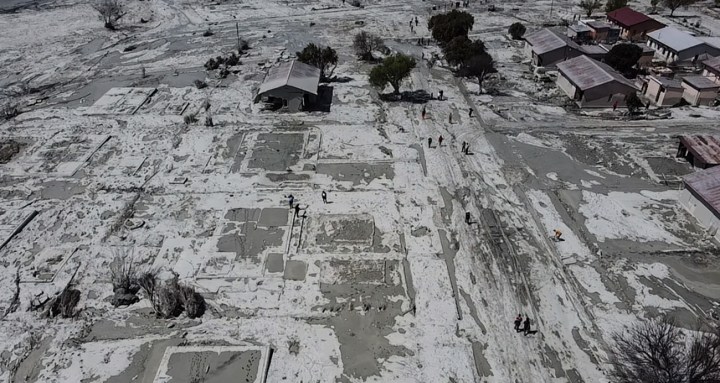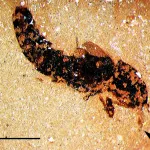TAILINGS SPILL OP-ED
The worst ecological impact of the Jagersfontein slimes dam spill is yet to come

Should the tailings from the Jagersfontein Mine contaminate the Kalkfontein Dam and affect the 200km of the Riet River, it will be a regional disaster that threatens one of the few remaining refuge areas for aquatic biodiversity in South Africa.
In the 21st century, mankind has totally dominated the globe, and everything in it. Our endeavour to develop our natural resources for human growth and prosperity has affected every seen and unseen part of this small planet we all call home.
Today all approximately eight billion people on Earth are more connected than ever, we know almost instantly what is happening in some of the most remote parts of the world and get to participate in the who, what, why, when and how of almost every discussion taking place around the world.
But our development of natural resources comes at a cost, a trade-off that we are not aware of, and generally not engaging in. Our resources are limited, we can use them up and we are most definitely overusing them. The consequences of our excessive use of our vulnerable water resources include social and ecological disasters.
On 11 September 2022, in the small mining community of Jagersfontein in the Free State, a more than 100-year-old man-made 65ha diamond mine tailings dam of processed waste failed. The resulting spill claimed at least three human lives and damage to property estimated to cost in excess of R100-million.
The social impact of the spill has been tremendous, affecting the livelihoods of many thousands of people and the whole community of Jagersfontein. The ecological impacts of the spill however are still being played out.
The estimated more than 6,000m3 of tailings has spread over a massive area and reached the Kalkfontein Dam and the Riet River. From the Kalkfontein Dam the moderately utilised Riet River flows for about 200km into the Vaal River just 35km upstream of the confluence between the Vaal and Orange Rivers.
The massive spill of tailings is now spread over such a huge area that a clean-up is impossible. The important next question we need to ask is what is going to happen next?
Visit Daily Maverick’s home page for more news, analysis and investigations
We are in a high rainfall hydrological period. This means that over most of the central and eastern parts of South Africa in particular we expect above-average rainfall. In recent years this has been evident from the floods in Durban and KwaZulu-Natal, to the deluges experienced in Johannesburg and across the Free State. We expect similar rains over the 2022/2023 wet season.
The recent rains of the 2021/2022 season may already have contributed to a highly saturated landscape that after years of drought may have been one of many contributing elements to the Jagersfontein disaster.
This year’s rains are now expected to mobilise the tailings and wash a lot of it into the upper Proses Spruit and the Kalkfontein Dam. Impacts of this event may be mobilised beyond the dam after the season’s first rains and possibly affect the Riet River along its length to the Vaal River and possibly the Orange River.
While the lower Vaal River is largely utilised and in an impaired ecological state, the Riet River has historically been a refuge area of aquatic biodiversity in the region and a favoured destination of specialist yellowfish anglers who frequent the Lilydale Rest Camp in the Mokala National Park to target regionally rare Largemouth yellowfish on a catch-and-release basis.
Read on Daily Maverick: To prevent dam tailings disasters, heed the call from frontline workers and communities
These fish are the living gold of South Africa. The dedicated angling industry was worth more than R130-million in 2008 and has continued to grow. Yellowfish are also key indicator species and help us manage our river health.
Today the Riet River below the Kalkfontein Dam is in a relatively better ecological condition than other tributaries of the lower Vaal River catchment and an important refuge area for aquatic biota and other biodiversity and key ecosystem processes.
The Riet River catchment also includes the nationally recognised Freshwater Ecosystem Priority Area Kromellenboog Spruit fish sanctuary, a river that flows parallel to the Proses Spruit that has been affected by the Jagersfontein spill.
Should the tailings of the Jagersfontein Mine contaminate the Kalkfontein Dam and affect the 200km of the Riet River, another regional disaster that may affect many more thousands of South Africans and threaten one of the few remaining refuge areas for aquatic biodiversity in South Africa is expected to occur. The worst ecological impact of the Jagersfontein slimes dam spill is yet to come.
Urgent action is needed to ascertain the potential for the spill to spread across the landscape and contaminate the Kalkfontein Dam and the associated Riet River. The risk of multiple stressors associated with the spill to the vulnerable socio-ecological system of the Riet Catchment should urgently be determined.
Only then will the real environmental impact of the spill be understood and mitigation measures taken. DM
Dr Gordon O’Brien is with the School of Biology and Environmental Sciences in the Faculty of Agriculture and Natural Sciences at the University of Mpumalanga. He has specific experience with ecological water requirements and environmental flow assessments associated with river basin management on large rivers in Africa including the Nile, Zambezi, Thukela and Vaal, Senqu and Nzoro and Kibali Rivers.




















 Become an Insider
Become an Insider
Comments - Please login in order to comment.